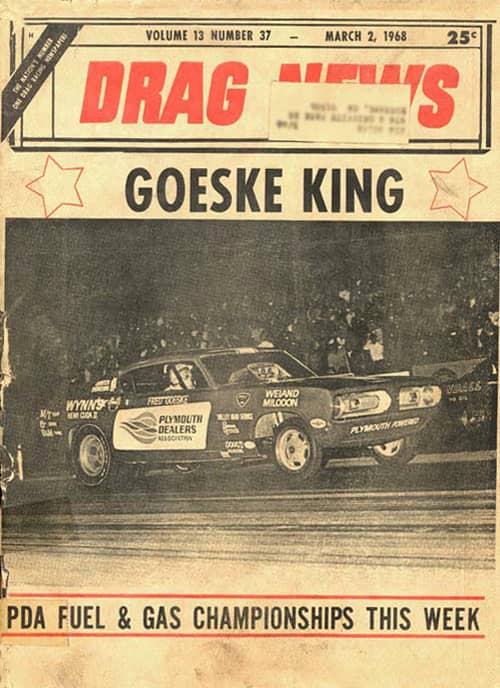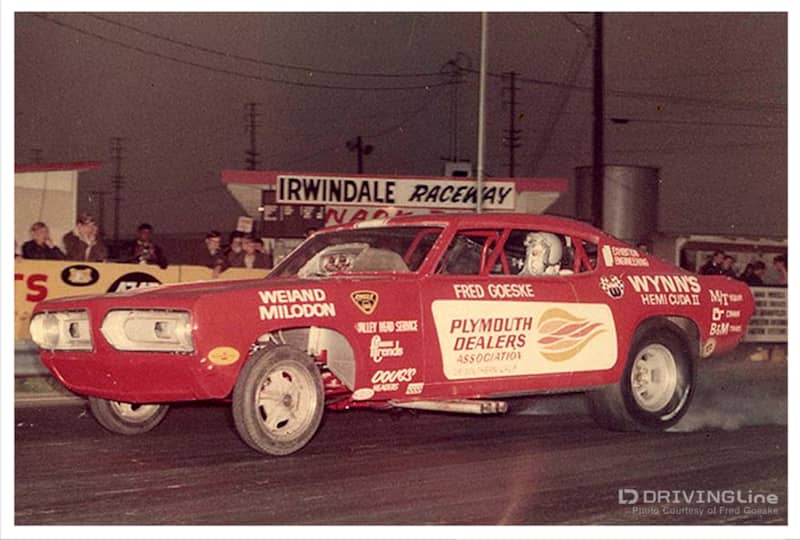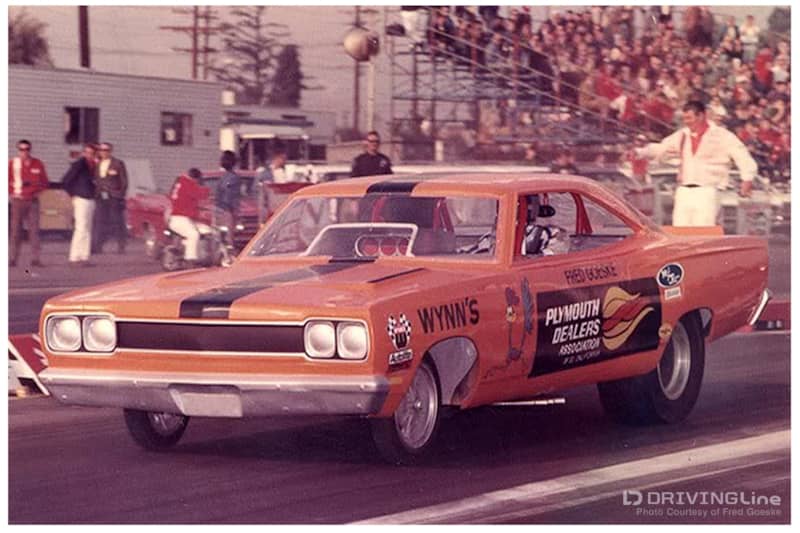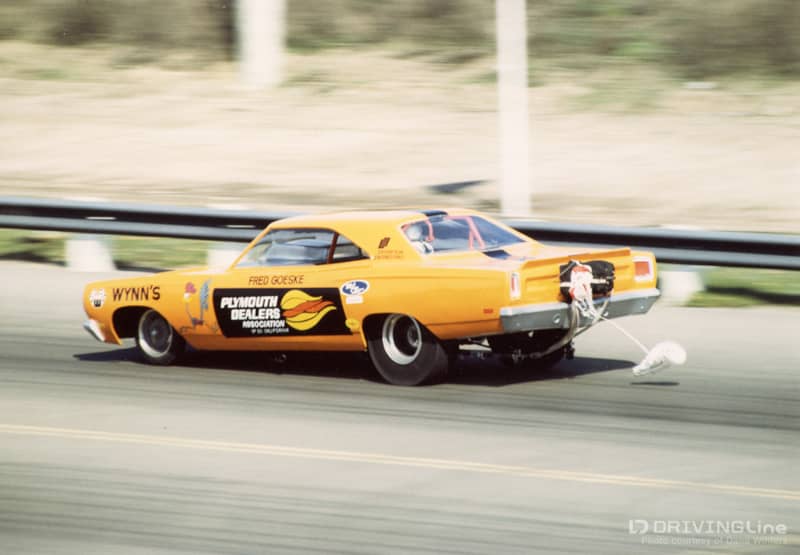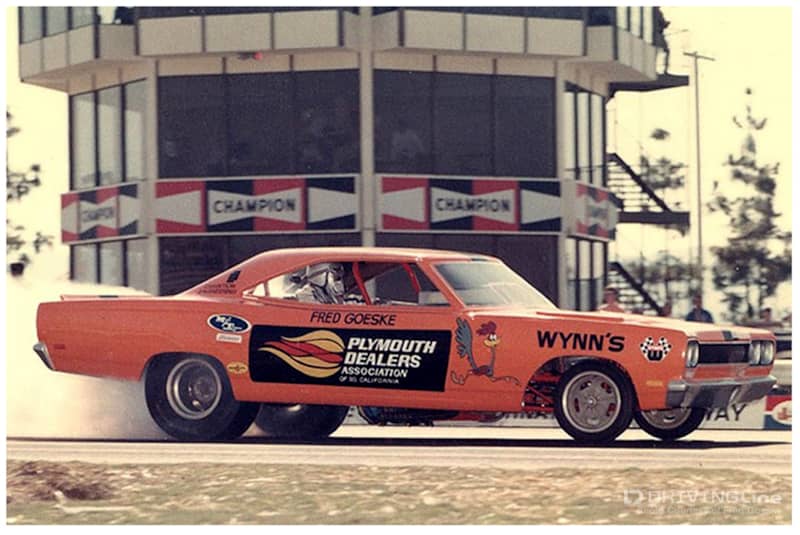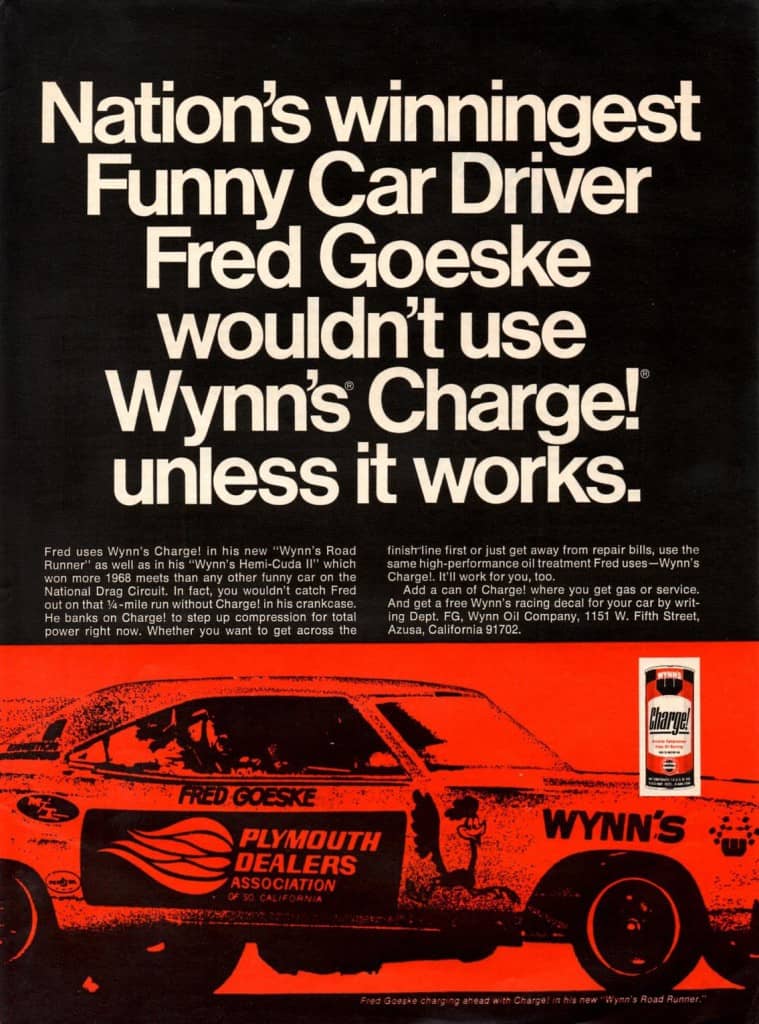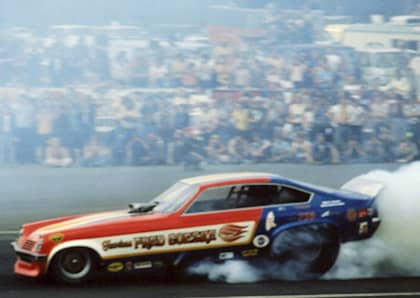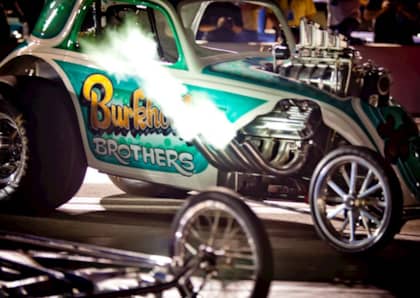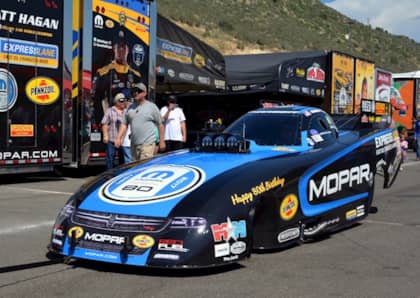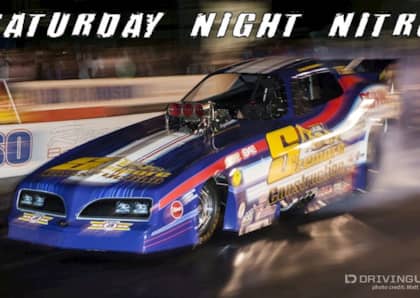Drag Racing Legend: Fearless Fred Goeske
Drag racing might have been born in the forties and grown up in the fifties, but it took the Super Sixties to make it explode. Coast to coast, every weekend, nitro-gulping monsters were shakin’ it down the 1320 like nothing anyone had ever seen before. Bleachers were packed and the rules were loose. Horsepower increased exponentially. Detroit factories had finally stopped being coy and were stuffing stupidly large V-8 engines into regular passenger cars. Gas was cheap. Even the guitars humming out of the one-speaker AM radios were getting distorted and fuzzy. Overkill was some alien concept that only buzz-killing nerds and Naders could understand. These were the gold years- the nine coats of clear over gold metalflake years- of this thing we call Motor Culture. Today, drag racing is all about big business and multi-million dollar budgets and ridiculous ticket pricing and even Don “The Snake” Prudhomme can’t swing the sponsorship to compete any more. The super sixties came and went like everything has to, and we missed it, most of us. Born too late, we had to learn about it after the fact by building Revell model kits or collecting Hot Wheels and dog-eared old magazines. But as you sink your teeth into this era- the greatest and most spectacular time in drag racing, you learn that not every quarter-mile hero, not every glorybound wild man got that little potmetal Hot Wheel or that plastic Revell kit. And some of them are still around.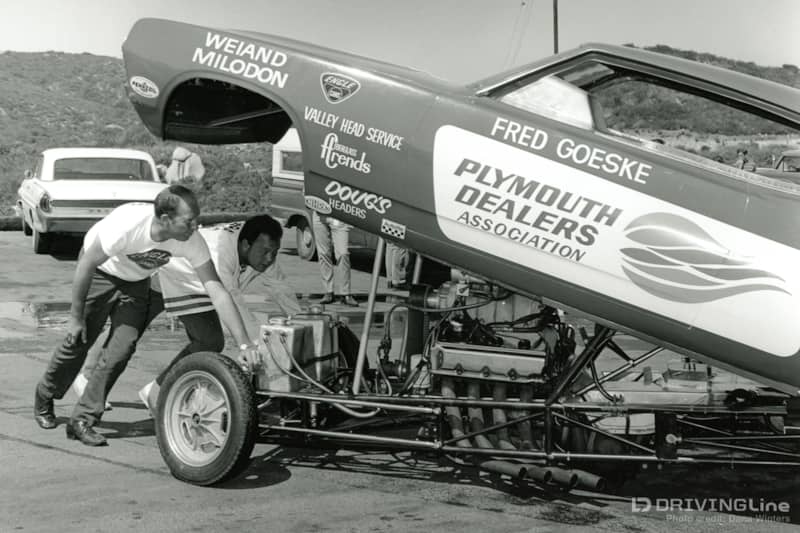
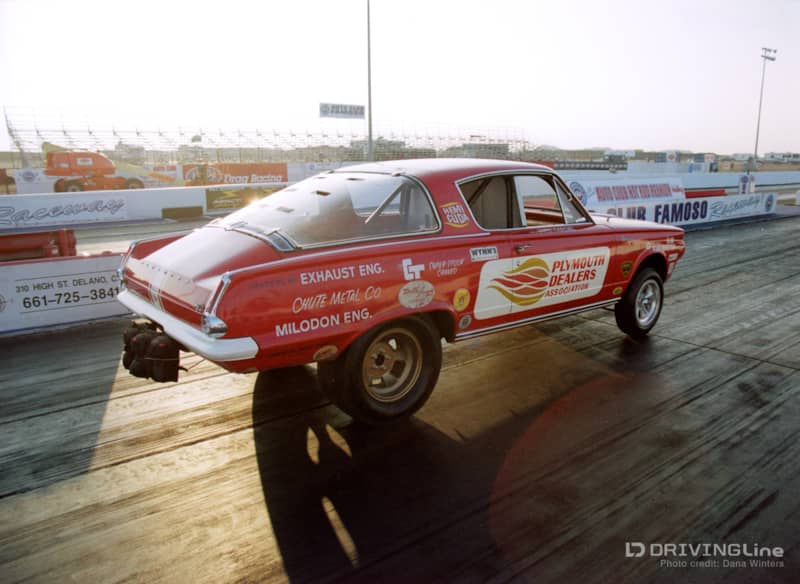
Where It All Begins
“I was born in Oklahoma and we moved to Thousand Oaks when I was a young boy, so I grew up in California. I don’t look like it, but my mother was half full-blooded Cherokee Indian. I guess I got my dad’s coloring. ” “I’ve just always liked cars. My first one was a WWII surplus jeep. Out here in the San Fernando Valley- there was still a lot of dirt roads, lots of orchards. Not a lot of people, not like now. You could have a good time messing around with a jeep.” “In high school I got a ‘32 Ford. We did lots of street racing, me and my buddies. We’d go from Thousand Oaks to the Bob’s Big Boy on Van Nuys Blvd. And if you kept going, the road would turn to dirt. There just weren’t that many people out there but the cops would still come after you. We’d drink beer out on some remote road somewhere- no marijuana or any of the other stuff. This was 1955 and it was only beer back then. In Thousand Oaks we had one cop- a deputy sheriff from Ventura. We knew him and he knew us.” If this sounds like a Beach Boys song or the start of a cheesy delinquent B-movie plot, it’s because those pop songs and those movies were written about real guys like Fred and his hot-rodding buddies. They were carving out a new lifestyle and didn’t even realize it. They hit the Auto Age at the perfect time. “I’ve always been mechanically inclined. After High School I had a Crosley with a Chevy V-8. I used to take it to the San Fernando Valley Drag Strip. Tommy Ivo was a good friend. At that time there was no christmas tree at the strip, just a flagman.” He switches his train of thought. “Hey, remind me to take you out back. I’ve got something in one of those containers that you won’t believe. It’s the fastest street-legal vehicle in the world. I might want to sell it.” “Okay.” “I spent a lot of time at that dragstrip. Having a good time messing with cars. Man, I thought I had everything beat.” “Then in 1960 I got drafted.” He paused and thinks about that a minute. “Hold on I have to go out and check something.” He disappears into his shop.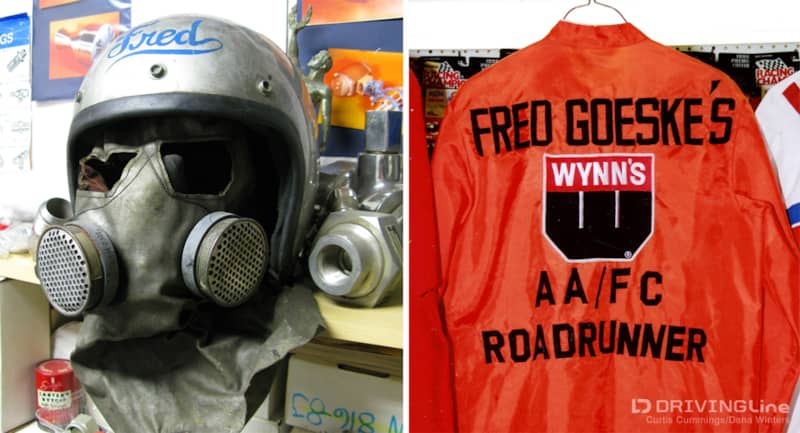
Making the Best of a Bad Situation
“So Fred, Uncle Sam pulled the plug on your party.” “Yeah. But I’ve always made the best out of any situation.” This, it should be noted, is supreme understatement. “The Army was fine. You just deal with it. I got stationed in Germany and me and another fella named Fred Neives came up with a plan.” This was the height of the Cold War and everyone expected the Russian masses to come thundering across Europe at any minute. There were a few hundred thousand GI’s planted in the land of schnitzel and beer to try and convince the godless commie bastards not to overrun civilization. Fred- the good capitalist- saw an opportunity. “I got discharged from the Army and walked right out of the gates and into a business arrangement. I started a finance company.” At the time, a new VW bug cost $1400 and could be bought with only a hundred dollars down. “Every GI wanted one. The problem was that the Army insisted that financial relationships between foreign banks and enlisted men was strictly verboten. But I had an idea.” The newly-discharged financier convinced serving GI’s to give him their money and he would run it through a bank in the Bahamas for them. “We were financing up to a thousand VW’s a month.” He smiles, still pleased with himself. And he should be. It’s one of those things that seems so simple after the fact. This is called making the best out of a situation. “I was living high, I don‘t mind saying it. I had a Porsche and a Jaguar. I chased women. I bought a Brabham Formula Two car to do some hill climbing and club racing.” He finds a photograph, “Here it is. That’s me at Hockenheim, where Jimmy Clark was killed. I sure wish I still had that car.”Back on the Dragstrip
Drag racing in 1966/67 was sort of an organized street brawl. Things were loose as a goose and everybody seemed to be trying some new method to extract that extra tenth of a second. The door-slammers were production based, with fiberglass front fenders, doors and hoods. Things like ashtrays and push locks remained. Mickey Thompson was bolting his custom Hemi heads on big block Pontiacs. Gas Ronda would slam the first non-blown 8 second quarter in his Mustang powered by a ferocious injected SOHC Ford Nascar 427. Chrysler was rollin’ with the ultra-potent and now-godlike 426 Hemi, but they were still a little buggy and the old blown 392’s were still dominant. As the horsepower was really getting shot into the stratosphere, the cars stayed heavy and brutal. The classes kept changing- AFX Factory Experimentals to SXS Super Experimental Stockers. In a couple of years they’d just be known as Funny Cars.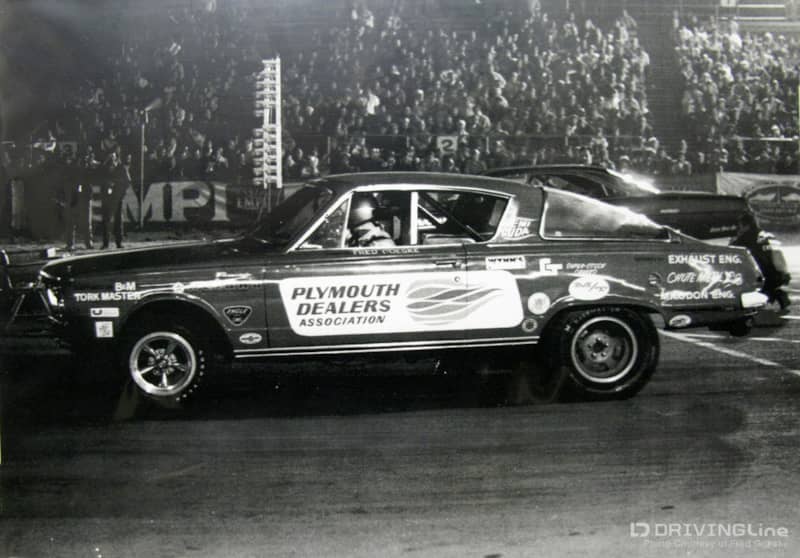
Creating the Hemi Cuda
Now stateside, Fred focused on the flash-bang world of professional drag racing. And he was gonna do it with an unconventional car - a car that was considered a failure by its own builders. Fred thinks for a minute, “It was just there.” Plymouth had the idea for a rear-engined Barracuda in 1965. They hired Bob and Don Spar of B&M Transmissions to make it happen. Pat Foster, Hugh Tucker and Larry Dixon Sr. did the building. It was Pat Foster’s first real race car. Tom McKewen was set to drive it. The original rear-engined Hemi Cuda was all steel and had a different stance- high up front like a gasser- than the one that came after it. Fred’s Hemi Cuda was actually the second one built. The first one came to a dramatic end when some unforseen aerodynamic issues bit hard, and with the heavy engine in back giving in to physics they sent McKewen into a full-tilt Hemi boogie back flip. Let’s try this again. The second car stood lower, had the air flowing better around it. It sported fiberglass doors, hood and front fenders. The Plymouth Dealer’s Association wanted to drum up some excitement for their performance cars and saw this funky fastback as the answer to their checkered flag trophy girl dreams. Their money and all that talent? What the hell could go wrong?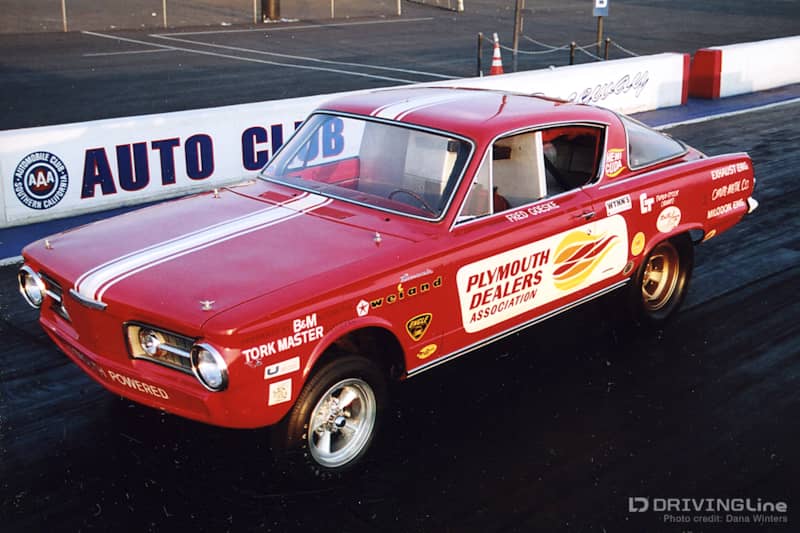
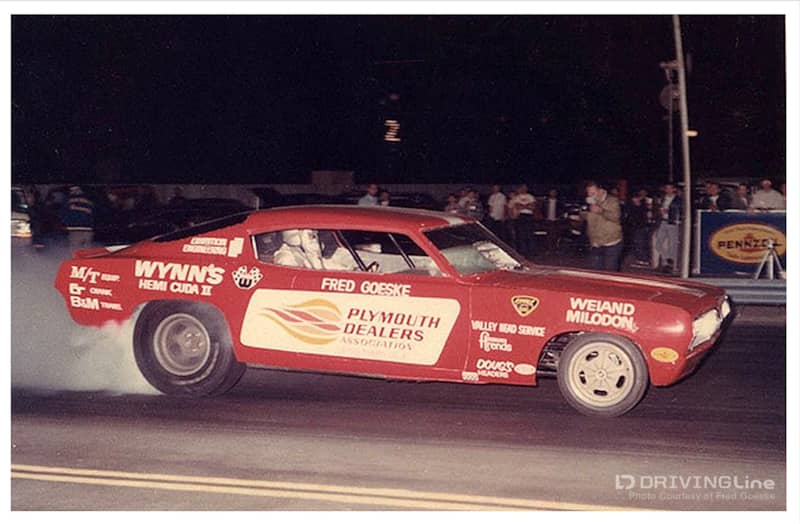
Setting the Record
Back at his old stomping grounds, the San Fernando Drag Strip, Fred unloaded his new car and launched it through the quarter quicker and faster than it had ever gone before. “I told Pat Foster and he told me that the clocks must’ve been messed up at that strip.” Fred cracks a grin. A week later at Irwindale, Foster watched as Fred shimmied himself in between the firewall and the steering wheel. The motor took up all the back seat space and half of the front seat as well. The front glass would almost touch the tall lanky driver’s nose. “The lights flash, I launch and we went quicker and faster than we went at San Fernando. I got out of the car and turned to Foster and said- well, I guess the clocks are screwed up at Irwindale too!” Fred heads back into his machine shop with a grin that says everything anyone needs to know about the satisfaction of that day 40-something years ago. Smite the disbelievers. “See, all the other cars would leave on us at the line. We only had a single-speed transmission. High gear only. B&M came up with it. Called it the Torquemaster. There wasn’t room for a regular transmission.” Fred figured out how to powerbrake the ‘Cuda at the launch and then be patient while the car caught up to the gearing. About halfway down the strip the car would lift visibly and after that it was Go-Time. The car was it’s own show and Fred knew it. He’d lay down monster burnouts at the line and be able to hear the crowd cheer over the engine noise as the tire smoke cleared. “It would start slow, but once it got up to speed with that one high gear, that Barracuda would be movin’. The other guys were doin’ about 170. When we got up to speed we’d hit 185. Later 190. We’d get ‘em about 100 feet from the finish lights.” Fearless Fred the showman- shooting past at the last possible second. Crowds on their feet, straining to see the finish. “The car became known for that.”